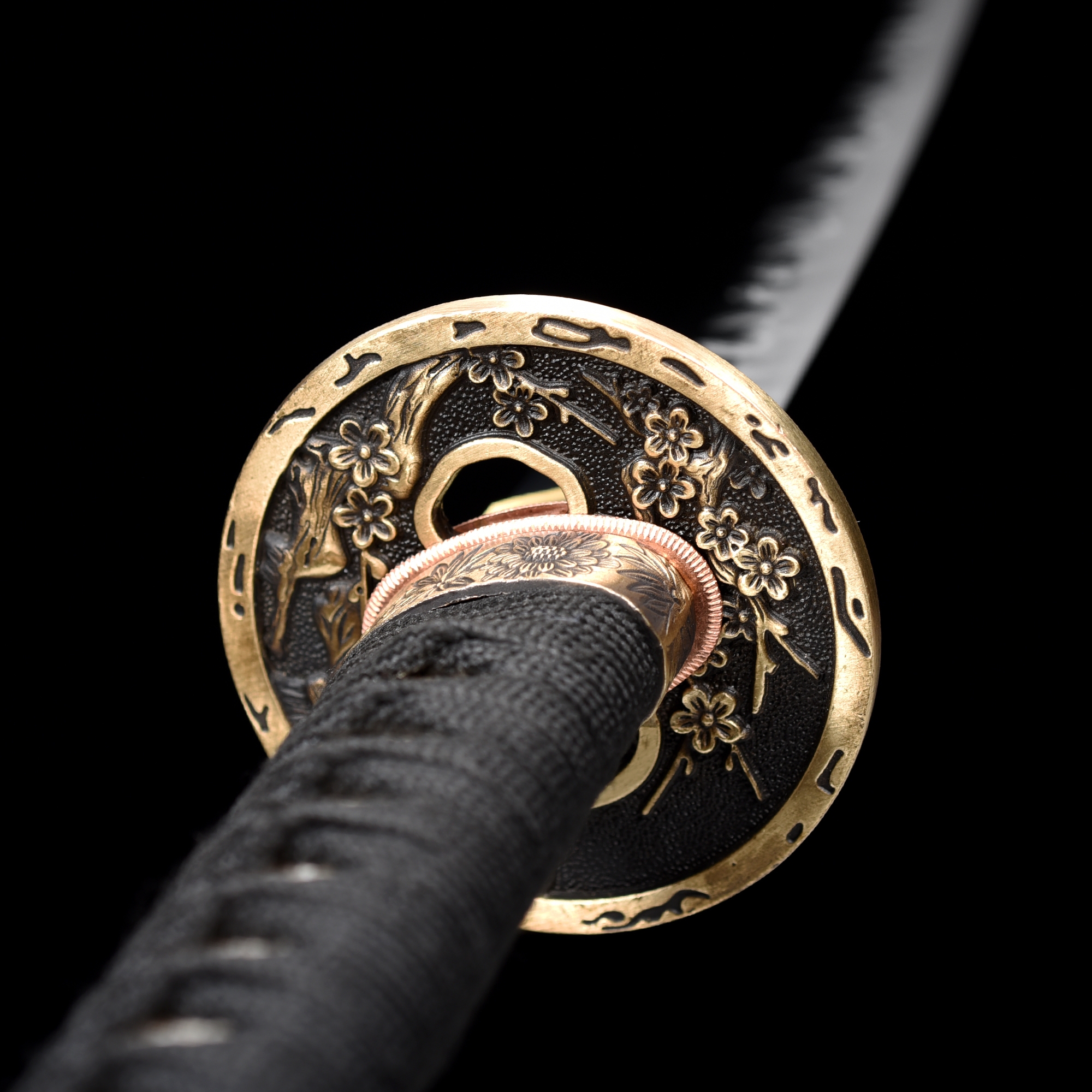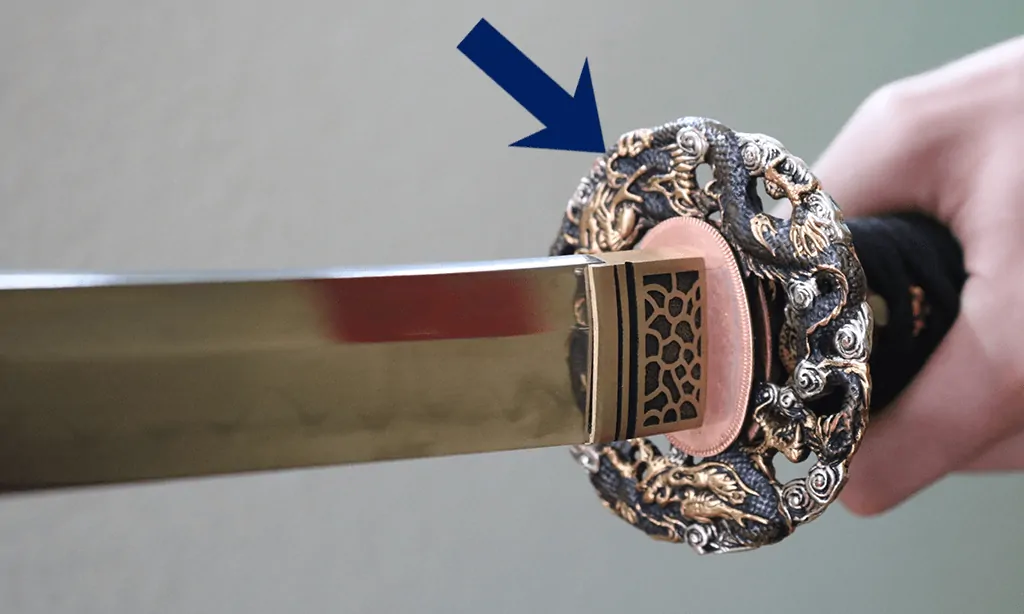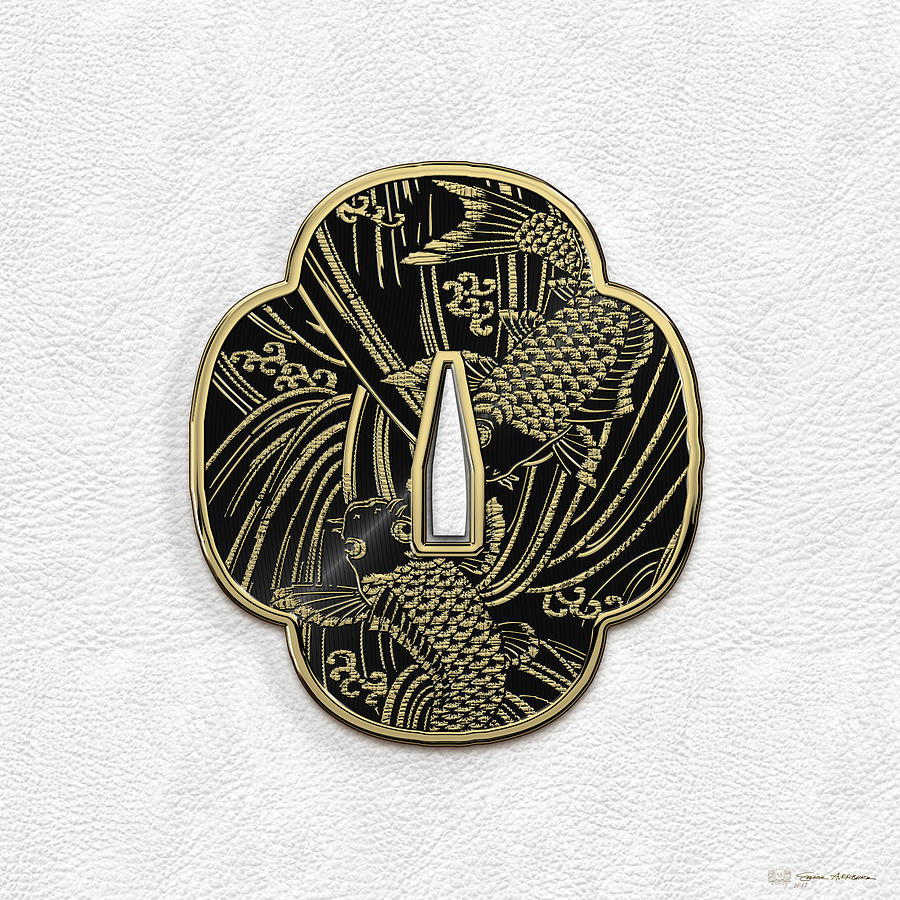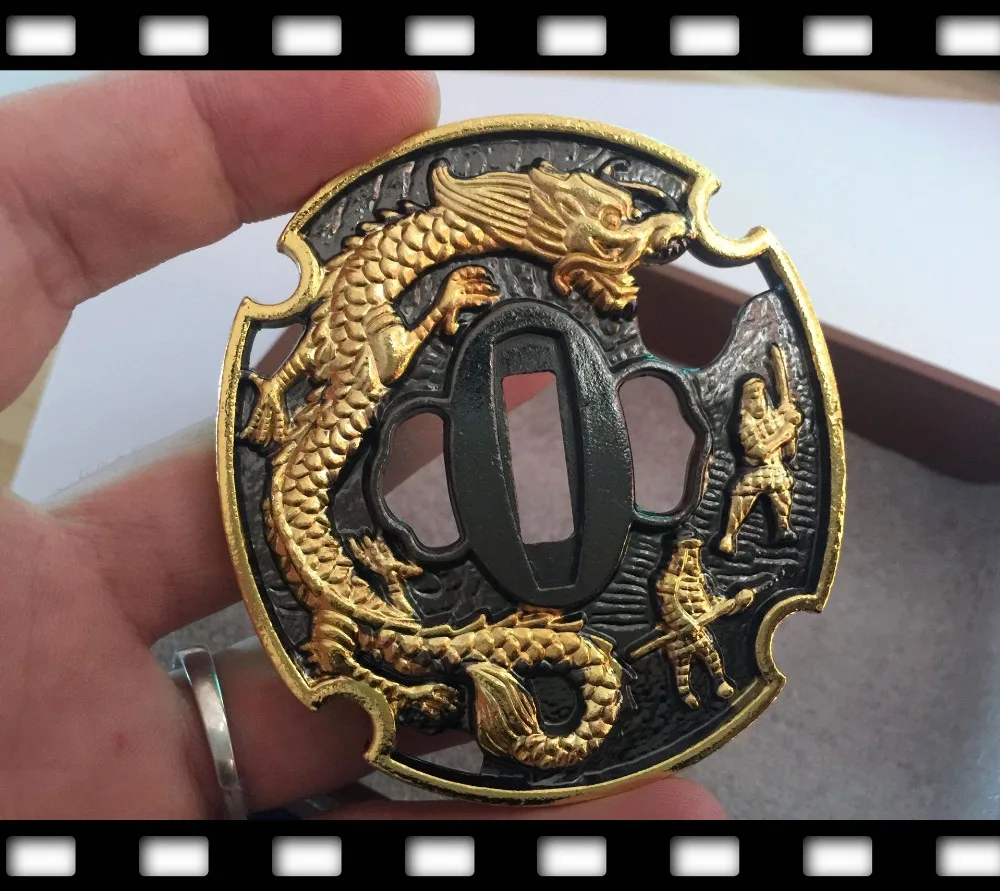
Tsuba with design of dragon, clouds and lightning Museum of Fine Arts
Design your own Japanese katana with Hanbon Forge's custom katana service. Our full hand-forged swords are made by skilled artisans using traditional techniques and high-quality materials.. Tsuba Fittings: Choose from over one hundred unique blade guard designs. Sword Bag: 7 kinds of beautiful sword bag for free choosing. Note: you can write.

Pin on Katana
The Katana Tsuba is to design in order not to create a contrast with the other parts of the Katana, especially the parts in tight relationship with that particular item: the Tsuka, the Saya and the Fuchi. Some designs are delivered free of charges and come as standard delivery. For custom request, buyer can be asked to choose an item from a list.

Edo period antique Tsuba for Samurai Sword (T188) Samurai Museum Shop
Getting to Know Katana Tsuba. The history of the Tsuba can be traced back to the earliest swords. Removable handguards can be found on burial mounds from as far as 300 to 400 A.D. These are better known as Hoju or Toran Kei. Hoju means jewel while Toran Kei means upside-down egg shape. These are the earliest designs of the tsuba that came after.

Tsuba for japanese sword katana samurai sea animal style
Key features: katana, silver tsuba, 1045 carbon steel, full tang, blade polished, handmade, sharpened, black saya, black cord handle, alloy fittings. Expertly hand forged by seasoned sword smiths using proven, centuries-old technique. Exceptionally elegant and functional katana, handmade high carbon steel blade.. Overall length: 40.55 inches, handle length (tsuka): 10.24 inches, blade length.

Tsuba with design of two carp Japanese art, Art, Ancient art
During the Kamakura period (1185-1333), tsuba began to take on more elaborate designs, often featuring intricate openwork patterns and engravings. By the Muromachi period (1336-1573), the tsuba had become an integral part of the sword's overall aesthetic appeal, with artisans creating ever more elaborate and sophisticated designs.

Highperformance T10 Carbon Steel Flower Tsuba Real Hamon Japanese
A sword guard (tsuba) is a metal guard on a samurai sword between the handgrip and the blade. It protects the hand from sliding onto the sharp edge of the blade. Sword guards vary in shape and design and were carved or molded. Use the templates or create your own shape and design a sword guard. Materials. Template copied on cardstock or tag.

Handmade Japanese Katana Sword With Golden Blade And Bamboo Style Tsuba
The tsuba is the guard around the handle of katana's sword. Tsuba can be made of metals like iron, gold, copper and silver, or alloys, which can stand up to actual repetitive use in combat. Tsuba can be found in all kinds of shapes, both regular and irregular. The most common shapes of tsuba are Maru gata, Kaku gata, Shitogi and Mokko gata.

Katana Parts and Components Medieval Swords World
Tsuba,Orcish,Copper Tsuba For Japanese Samurai Sword Katana. $58.00. Rare Top Signed Tsuba/Inlay Copper Japanese Samurai Sword Katana. $58.00. Tsuba Dragon Solid Copper Tsuba Japanese Samurai Sword Katana. $58.00. Copper/Japan Samurai Sword Katana Fitting-Tsuba+Fuchi+Kashira+Menuki. $128.00.

Japanese Katana Tsuba Golden Twin Koi on Black Steel over White
Tsuba were usually designed to be mounted in matched pairs for long and short swords. Swords were normally worn thrust through a sash tied around the waist, the edge uppermost and the hilt to the fore. The principal design of the tsuba was shown to the fore, to be seen by someone facing the wearer. The tsuba design often continues on the back.

Tsuba with design of dragons and chrysanthemums Japanese art, Samurai
Tsuba (hand guard) Fitting: Tsuba protects your hand, balance the katana, and it's probably the second most refined part of a katana. We offer symmetrical pattern, anime theme, and auspicious designs that will bring good luck to the custom katana owner. The Habaki

Japanese Katana Tsuba, Yasuchika
The item "Lot of 9 Japanese katana tsuba including Masaaki Ishiguro Bodhidharma motif" is in sale since Saturday, June 26, 2021. This item is in the category "Antiques\Asian Antiques\Japan\Tsuba". The seller is "halfcupventure" and is located in Cedar Park, Texas. This item can be shipped to United States. Region of Origin: Japan.

Tsuba with floral designs Museum of Fine Arts, Boston Oni Samurai
Tsuba. The tsuba is the hand guard of a Japanese sword. Unlike European swords, which used the hand guard in part to protect against incoming attacks, while this is a factor for Japanese swords, the main purpose of the hand guard of a Katana is to prevent the users hand from slipping onto the blade. At the same time, it is also used to.

Tsuba (sword guard) with design of geese in flight Japan 1883[1600x1570
Three tsuba in tachi-mokkō-gata ( Source) By the Heian period from 794 to 1185, the classic hollyhock-shaped tsuba called aoi-gata emerged. Westerners often describe these sword guards as having a heart shape in each corner. This handguard style was not uncommon on tachi swords throughout history.. From 1185 to 1333, Kamakura-period tsuba featured pierced designs, in which early makers paid.

Iron Tsuba (sword guard) in a shape of a crane, Japan, early Edo, 1700
The tsuba is the handguard for the katana. It protects the wielder's hands from slipping onto the blade and harming themselves. It is therefore a crucial component of the sword. Tsuba, however, also evolved into an ornament over time. You can see tsubas with intricate designs made from precious metals like gold.

Buy Alloy Tsuba Katana Accessory Handguard For
The Tsuba is the Katana's guard designed to protect the wielders hand during a sword fight as well as prevent the swordsman's hands from accidentally slipping forward onto the blade. The tsuba also contributed to the swords performance by being weighted properly to counter-balance the blade. During the Muromachi and Momoyama periods between.

Pin on Art of the Tsuba
Katana tsuba designs. The designs found on tsuba are diverse, ranging from simple geometric patterns to complex landscapes and mythological creatures. The design not only contributes to the aesthetic appeal of the katana but also often holds symbolic significance, representing the samurai's beliefs, desires, or the aesthetic inclinations of the.